
PostHog vs. Pendo.io for Successful Product Activation

by
Wiktoria Slowikowska
Nov 4, 2024
Identify and convert your most valuable users
Sign Up
When it comes to driving product activation in SaaS, selecting the right analytics tool can make all the difference. Two powerful platforms, PostHog and Pendo.io, stand out for helping companies optimize user onboarding, improve product adoption, and ultimately, drive successful product activation.

PostHog vs. Pendo.io for Product Activation
In this guide, we’ll explore how PostHog and Pendo.io approach product activation, analyze their key features, and give a detailed comparison to help you choose the best tool for your needs.
Product Activation
Product activation is about ensuring users experience key features that highlight a product’s value as quickly as possible. A successful activation process can significantly increase user retention and lifetime value, making it essential to choose a tool that supports in-depth data tracking, feature usage insights, and effective guidance for new users.
Both PostHog and Pendo.io cater to these needs, but each has a unique approach to supporting product activation.
PostHog Overview

PostHog Product Activation
PostHog offers a powerful self-hosted analytics platform known for its event-based tracking and real-time insights. Built with product teams in mind, PostHog is highly customizable, making it suitable for companies that prioritize data privacy and want full control over their analytics. PostHog’s focus on comprehensive event tracking and feature experimentation allows teams to delve deep into user journeys and identify the actions that lead to activation.
Key Features for Product Activation:
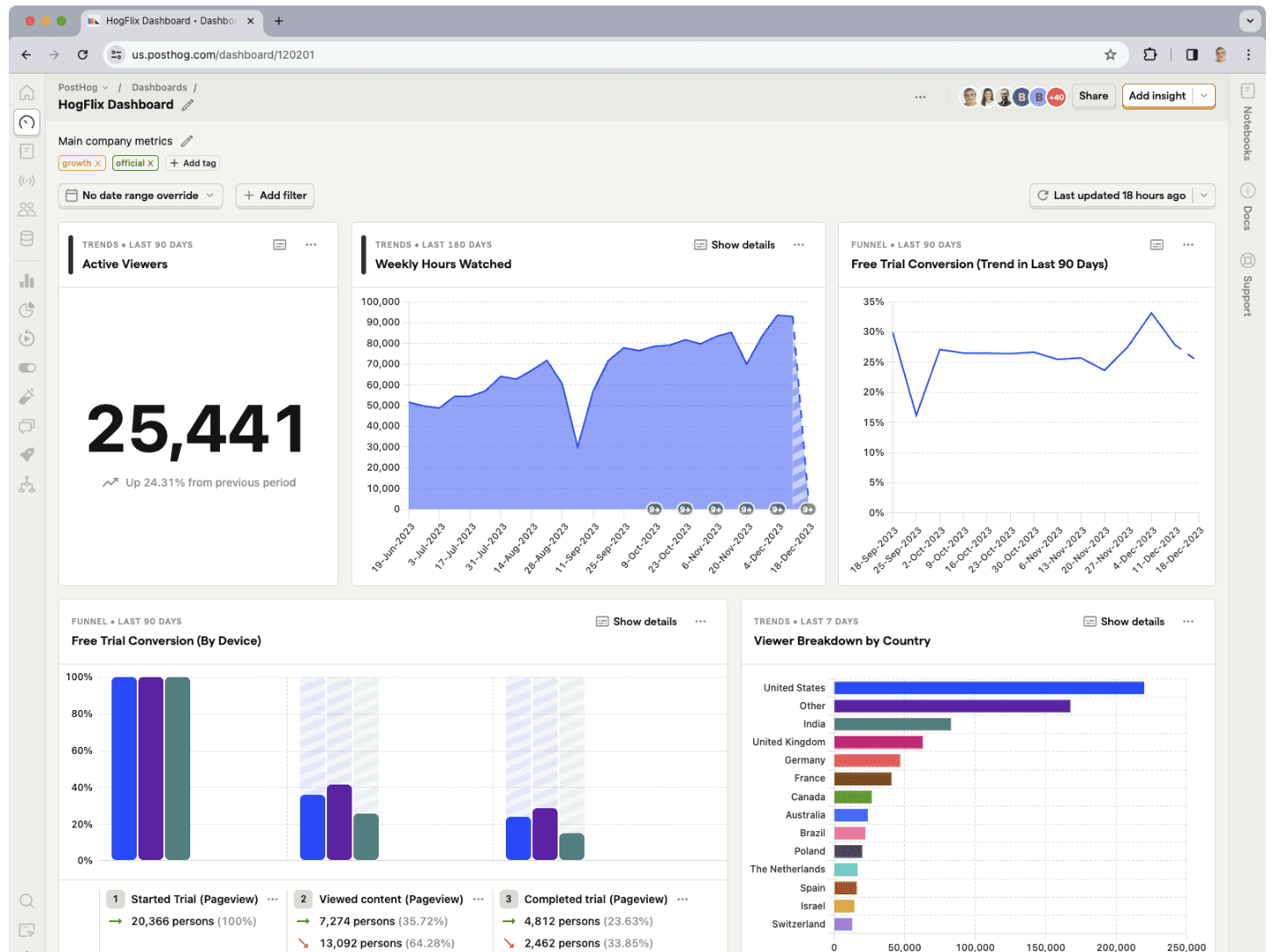
Event-Based Tracking: PostHog tracks each user interaction, allowing teams to monitor feature usage and assess how effectively users reach activation milestones.
Funnel Analysis: This tool provides insights into user journeys, pinpointing where users drop off and enabling teams to make data-driven improvements to the onboarding process.
Feature Flags and A/B Testing: PostHog’s feature flags allow teams to test and iterate on different features, helping refine the user experience for optimal activation.
Cohort Analysis: PostHog allows segmentation by user behavior, making it possible to create targeted activation campaigns tailored to different user groups.
PostHog is ideal for teams that want full control over their data and the flexibility to experiment with activation strategies through A/B testing and customizable tracking.
Pendo.io Overview

Pendo Product Activation
Pendo.io is known for its in-app guidance and feedback tools, making it especially well-suited for product-led growth. With Pendo, companies can deliver real-time in-app messages, create interactive walkthroughs, and design onboarding flows that highlight core features. This hands-on approach to user activation helps ensure users engage with the product right from the start.
Key Features for Product Activation:
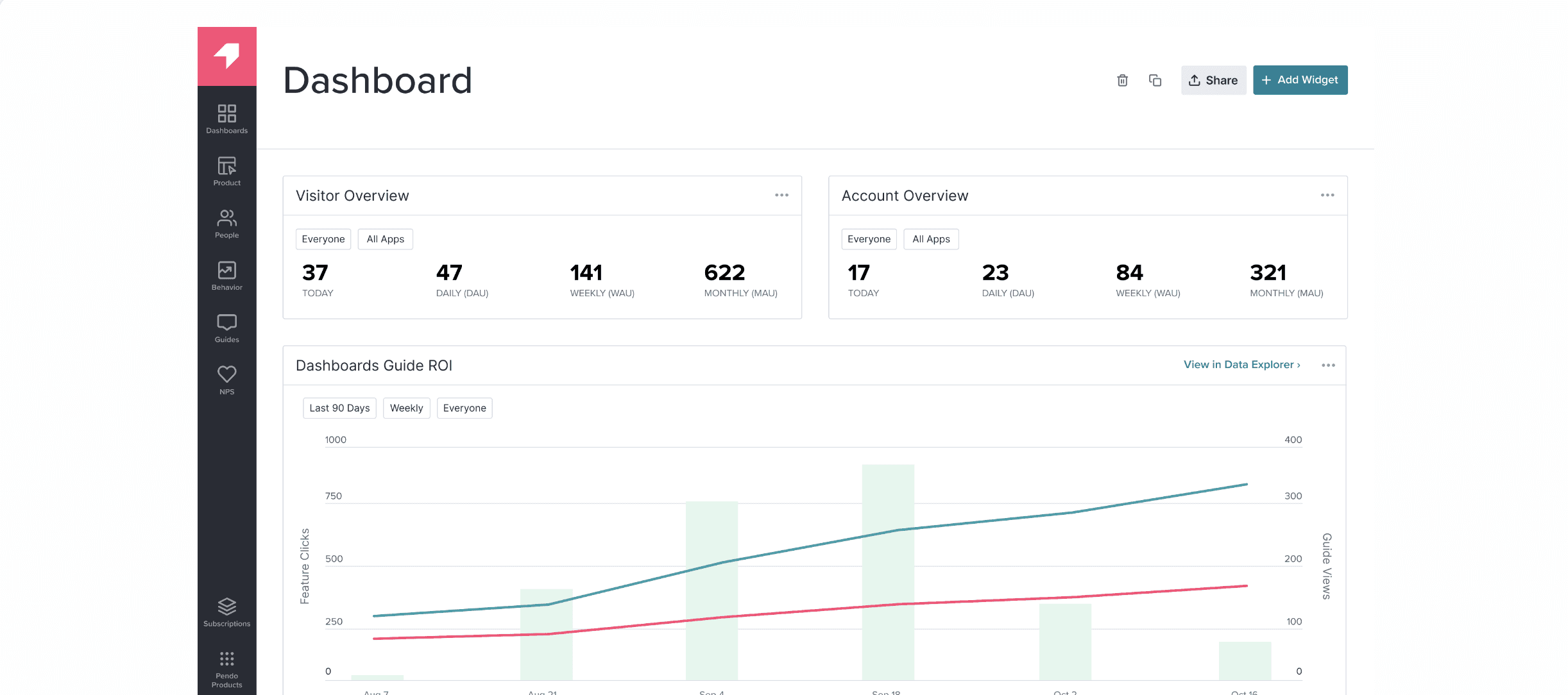
In-App Messaging and Walkthroughs: Pendo offers contextual guidance to users as they navigate, helping them understand and activate key features.
User Feedback and Surveys: With in-app surveys and feedback forms, Pendo enables teams to gather insights on user experiences, understand activation barriers, and make adjustments.
Product Usage Analytics: Pendo tracks feature usage over time, identifying which elements drive activation and helping teams focus on refining those features.
Segmentation and Targeting: Pendo allows teams to segment users based on their activation status and send targeted messages or guidance to users needing extra support.
Pendo is a strong choice for companies that want to drive activation through in-app guidance and real-time feedback, making it easier to steer users towards core features and enhance engagement.
Feature Comparison Table
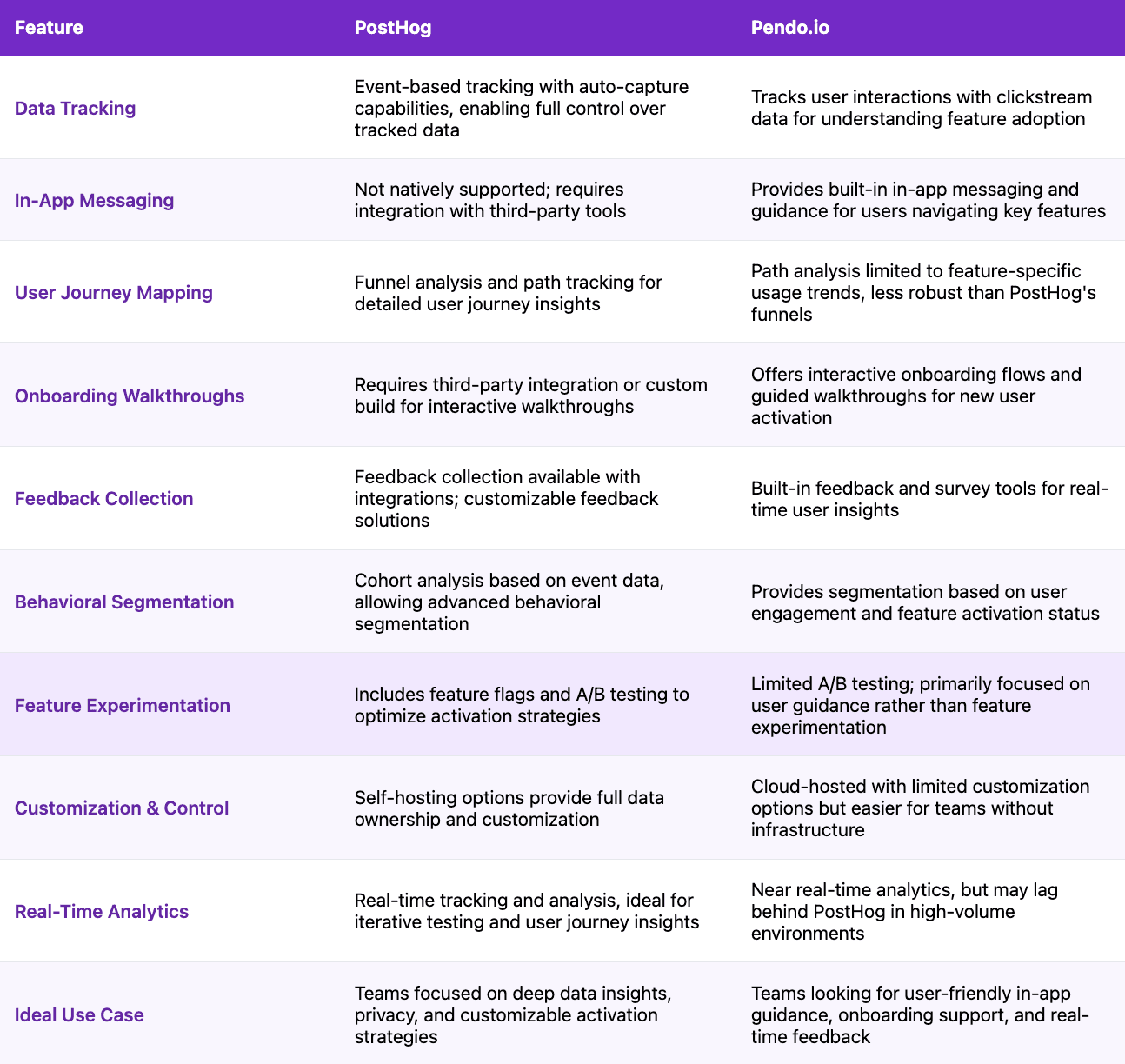
Product Activation Strategy Comparison
PostHog’s Activation Strategy
PostHog emphasizes data transparency and user autonomy in activation. By enabling in-depth event tracking and experimentation, PostHog allows teams to:
Identify Drop-Off Points: Funnel analysis tools make it easy to see where users fall off during the onboarding process, allowing for targeted improvements.
Analyze Activation Behaviors: With cohort and user behavior analysis, PostHog provides insights into actions that correlate with higher activation rates.
Optimize Onboarding with Feature Flags: PostHog’s feature flags allow teams to test onboarding strategies, helping product managers identify which flows lead to the highest activation success.
PostHog’s strengths lie in its data-driven approach to activation. It’s particularly suited for teams focused on understanding activation trends through rigorous analysis and experimentation.
Pendo.io’s Activation Strategy
Pendo offers a guided, user-focused approach to activation, relying on in-app walkthroughs and feedback mechanisms to support user engagement. Through these tools, Pendo enables teams to:
Guide Users Through Essential Features: Pendo’s interactive walkthroughs increase the likelihood of activation by helping users discover the product’s core features.
Adjust Activation Pathways Using Feedback: Pendo’s survey and feedback tools provide actionable insights, allowing product teams to identify and address user pain points.
Personalized Activation Support: Pendo’s user segmentation and targeted messaging help guide users who need additional assistance, fostering a tailored onboarding experience.
Pendo’s hands-on approach is ideal for companies aiming to drive activation by providing real-time user support, making it a good fit for product teams focused on interactive onboarding.
Pricing Comparison
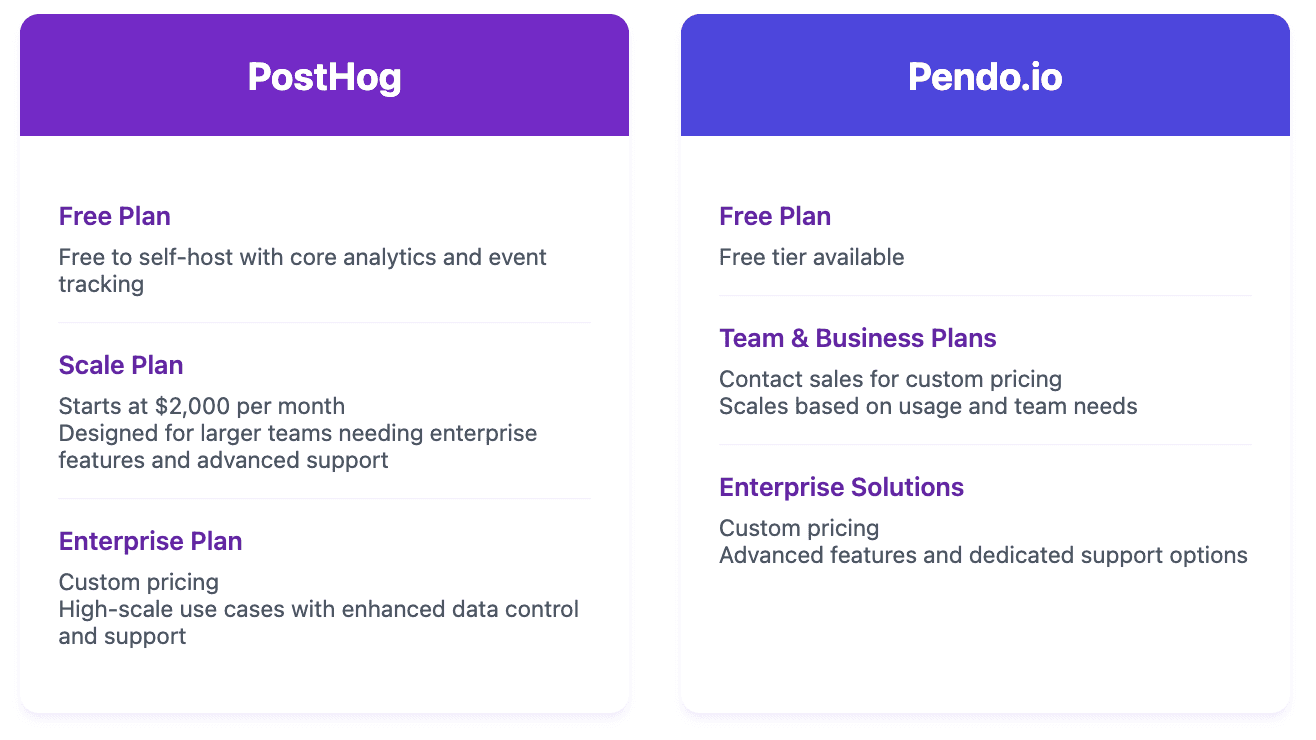
Both PostHog and Pendo.io offer free options, but for advanced capabilities, each platform has distinct pricing structures that scale based on usage and team needs.
PostHog Pricing
Free Plan: PostHog’s open-source version is free to self-host with core analytics and event tracking.
Scale Plan: Starts at around $2,000 per month, designed for larger teams needing enterprise features and advanced support.
Enterprise Plan: Offers custom pricing for high-scale use cases with enhanced data control and support.
PostHog’s pricing increases with the volume of data tracked, making it a cost-effective choice for teams prioritizing data privacy and flexibility.
Pendo.io Pricing
Free Plan: Available for teams with up to 1,000 Monthly Active Users (MAUs), providing basic analytics and in-app guidance.
Essentials Plan: Starts around $12,000 per year, covering feature usage analytics, NPS tracking, and in-app guidance.
Professional and Enterprise Plans: Ranging from $20,000 to over $100,000 per year, these plans support higher MAUs and offer features like feedback segmentation and sentiment analysis.
Pendo’s pricing scales with the number of MAUs and desired features, making it suitable for mid-sized to large organizations looking for comprehensive in-app guidance.
What Customers Say:
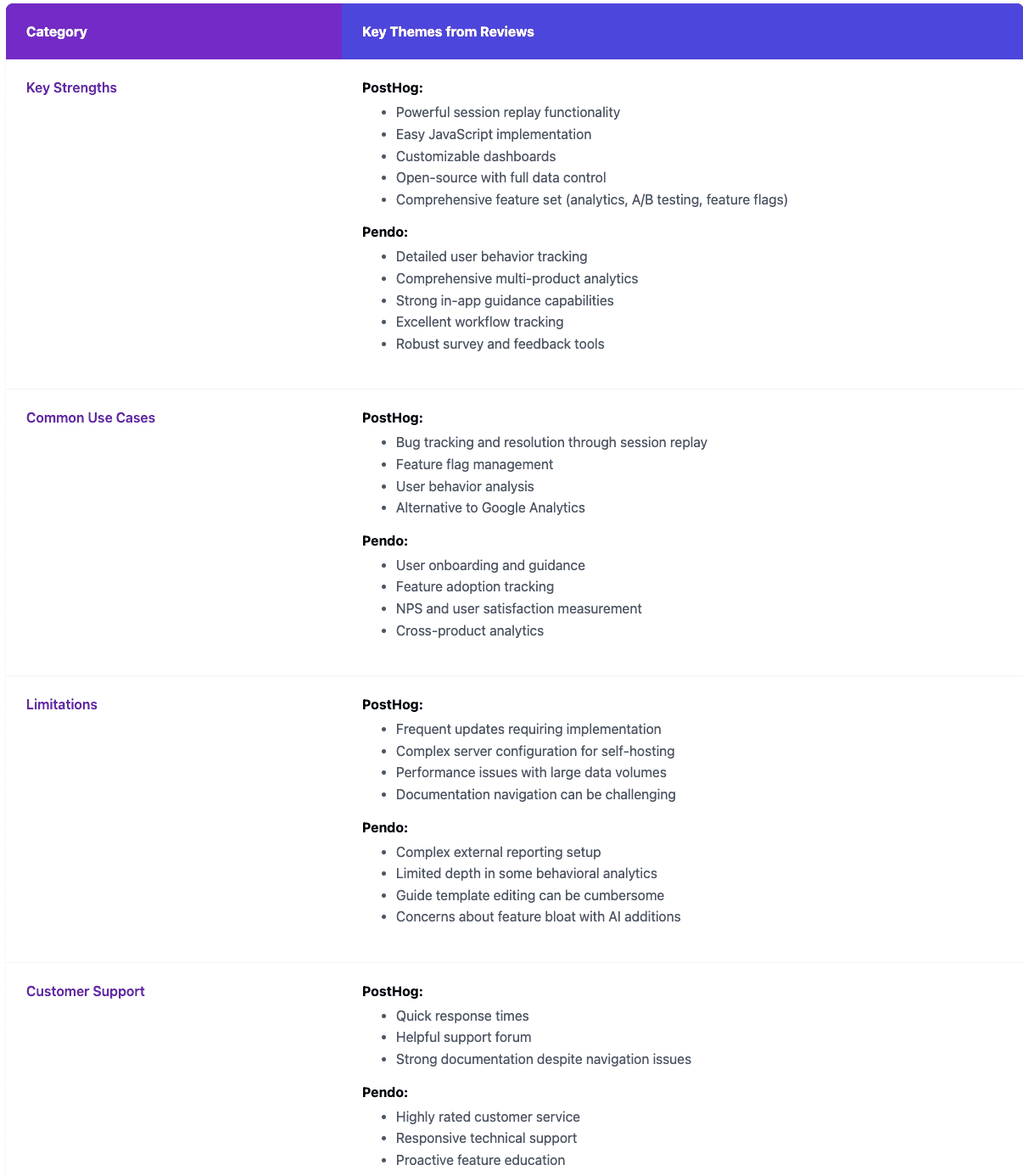
Which Tool is Best for Your Product Activation Goals?
Choosing between PostHog and Pendo.io depends on your specific needs for product activation:
Choose PostHog if you need full data control and flexibility with robust analytics and experimentation options. It’s ideal for data-driven teams that prioritize understanding user journeys and optimizing activation through data.
Choose Pendo.io if you want a guided activation experience with in-app messaging and feedback. Pendo excels at helping users navigate key features, making it a strong choice for teams focused on hands-on onboarding and interactive guidance.
Conclusion
Both PostHog and Pendo.io offer strong features for supporting product activation, but each caters to different activation strategies. PostHog’s in-depth data analysis and customization are perfect for companies seeking data autonomy, while Pendo’s interactive walkthroughs and feedback tools suit those focused on a hands-on, user-centric approach.
Understanding your product activation goals and team structure will help you select the right tool for your needs. With the right analytics platform, you can ensure users quickly experience the value of your product, leading to greater engagement, satisfaction, and long-term retention.




